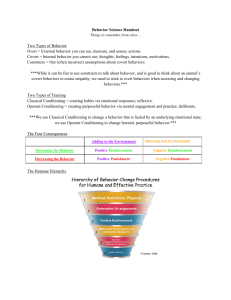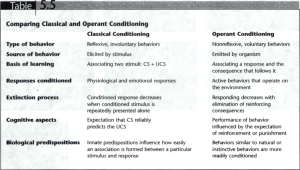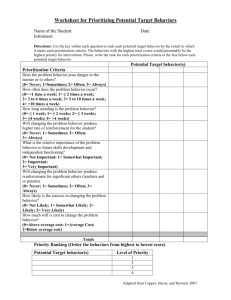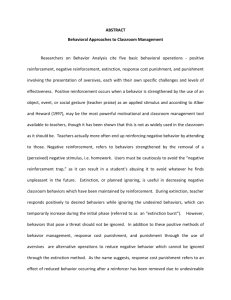Applied Animal Behavior Lecture Notes
advertisement
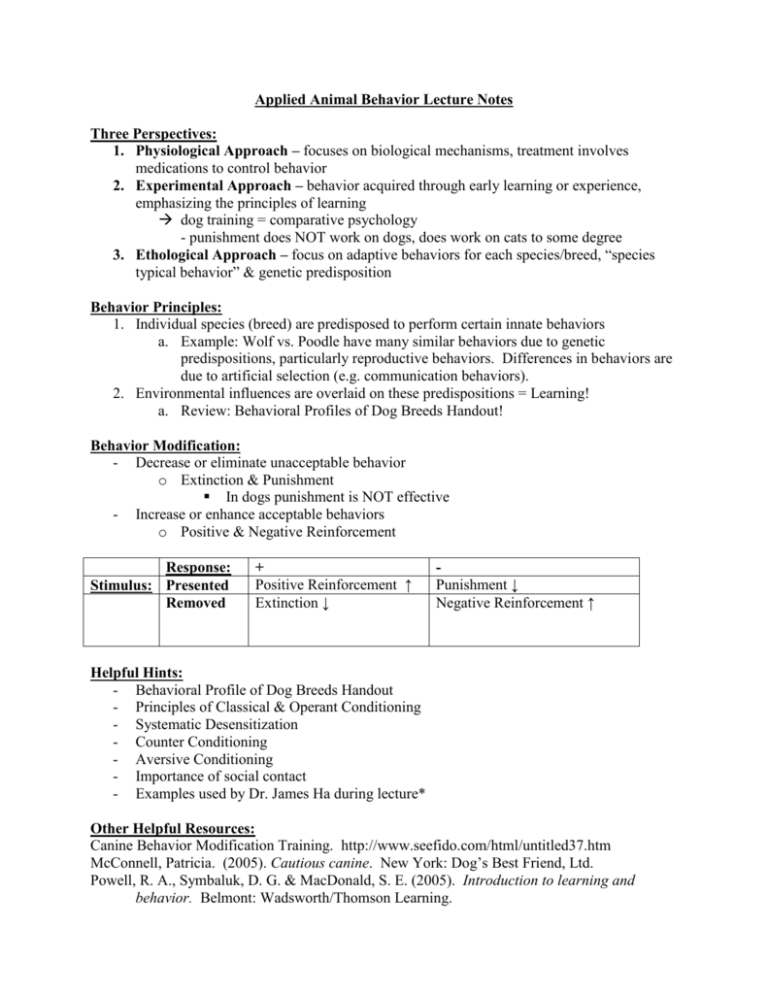
Applied Animal Behavior Lecture Notes Three Perspectives: 1. Physiological Approach – focuses on biological mechanisms, treatment involves medications to control behavior 2. Experimental Approach – behavior acquired through early learning or experience, emphasizing the principles of learning dog training = comparative psychology - punishment does NOT work on dogs, does work on cats to some degree 3. Ethological Approach – focus on adaptive behaviors for each species/breed, “species typical behavior” & genetic predisposition Behavior Principles: 1. Individual species (breed) are predisposed to perform certain innate behaviors a. Example: Wolf vs. Poodle have many similar behaviors due to genetic predispositions, particularly reproductive behaviors. Differences in behaviors are due to artificial selection (e.g. communication behaviors). 2. Environmental influences are overlaid on these predispositions = Learning! a. Review: Behavioral Profiles of Dog Breeds Handout! Behavior Modification: - Decrease or eliminate unacceptable behavior o Extinction & Punishment In dogs punishment is NOT effective - Increase or enhance acceptable behaviors o Positive & Negative Reinforcement Response: Stimulus: Presented Removed + Positive Reinforcement ↑ Extinction ↓ Punishment ↓ Negative Reinforcement ↑ Helpful Hints: - Behavioral Profile of Dog Breeds Handout - Principles of Classical & Operant Conditioning - Systematic Desensitization - Counter Conditioning - Aversive Conditioning - Importance of social contact - Examples used by Dr. James Ha during lecture* Other Helpful Resources: Canine Behavior Modification Training. http://www.seefido.com/html/untitled37.htm McConnell, Patricia. (2005). Cautious canine. New York: Dog’s Best Friend, Ltd. Powell, R. A., Symbaluk, D. G. & MacDonald, S. E. (2005). Introduction to learning and behavior. Belmont: Wadsworth/Thomson Learning.
